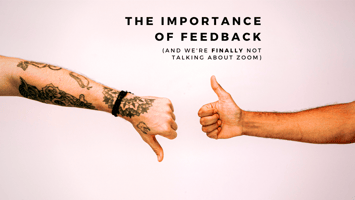The High Point Enterprise published a story on October 23, 2021 covering the launch of Thrive |...
Professional Anthologies: The Case for Action
Recently, Change Often had the opportunity to spend an afternoon with the 2021-2022 cohort of High Point University’s AmeriCorps VISTAs. This crew of inspiring young professionals will spend the next year working hands-on in the city of High Point to support and expand the capacity of some of our city’s most impactful nonprofits, including several members of our client base.
Here at Change Often we love HPU’s AmeriCorps VISTA program - myself, our Nonprofit Project Consultant Kayla Quick and our Research & Data Analyst Natalie Ward are all alumni of this program. It prepared us to work at this social innovation firm by introducing us to the community we serve and allowing us to learn the rhythm of the city - ultimately providing us with the home field advantage that sets us apart.
More importantly, though, a year as VISTA is a project management learning lab with the opportunity to create real impact. When we had the opportunity to connect with these VISTAs, we wanted to be sure they left the session with a real tool they can immediately implement, hopefully improving their outcomes and understanding of the process. We elected to teach them a bit about building a Case for Action.
A Case for Action is an important part of your Professional Anthology - think of it as the follow-up to your elevator pitch. Once you explain who you are and the broad scope of what you want to do, you can make your case. An effective Case for Action has three fundamental parts: 1. The Issue, 2. The Solution, and 3. The Vision. Let’s dive in!
The issue describes the problem at the center of your work. In a lengthy Case for Action, you can spend some time here providing context that makes your issue more memorable and relatable. Do your best to avoid deficit framing in your issue statement. Personal connections to the issue or a timeline leading up to the present can help you demonstrate to your audience that this problem is real and relevant, and that you have a good understanding of the layers within the project. This will position you perfectly to introduce your solution.
2. The Solution demonstrates that you have identified a key point of leverage and are prepared to fix the problem you just outlined. This is a concrete action that you are planning to take, rather than a more abstract supposition of what might change the tide. Action verbs are important in communicating the solution of your Case for Action, and active language will demonstrate personal and collective ownership. “I will ____,” “We commit to ______,” and other strong statements show that the work is already underway. Be mindful, though - this is commitment language, so make sure that you are prepared to deliver on whatever you promise in a Case for Action. Once stakeholders have read or heard your Case for Action, your credibility depends on your next steps.
3. The Vision inspires your potential stakeholders to walk alongside you - these goals can be more lofty than those outlined in the Solution, and are not as connected to your credibility. Make sure you actively shift your language, so that listeners understand that the vision is a projection about the impact of your work rather than a promise of deliverables. Dream big, reference community dynamics, and back up your vision with insight from the communities you plan to collaborate with in implementing your solution.
Sharing out a Case for Action is the most straightforward way to build momentum for a new project. Try it yourself!
Here at Change Often, we love to collaborate with visionaries. We also love working with those who can with great skill identify issues and their solutions. This is why we love working with HPU AmeriCorps VISTAs, and why we might just love working with you. Contact us to find out how we can help you perfect and even implement your Case for Action.
-3.png?width=1500&height=800&name=Change%20Often%C2%AEslim(1)-3.png)


